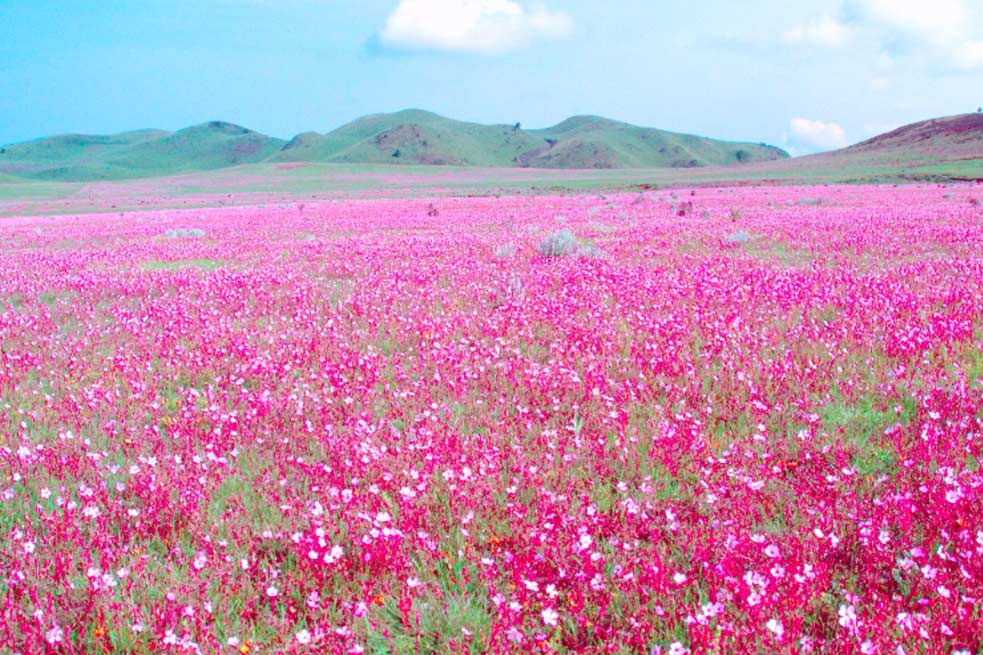While botanists have termed the Kitulo Plateau the “Serengeti of Flowers,” the local people refer to it as the Bustani ya Mungu (The Garden of God). The area sustains one of the finest floral spectacles on Earth. Supporting up to 350 vascular plant species, including 45 types of terrestrial orchid, Kitulo is without a doubt an unusual botanical show of enormous scale plus diversity in the main rainy months starting at the end of November and April.
Rising high at around 2,600 meters, or 8,500 feet, between the rugged peaks of the Livingstone, Kipengere, and Poroto Mountains, the well-irrigated volcanic soils of this Kitulo National Park support the largest and most important montane grassland in the entirety of Tanzania.
Among the most important watersheds of the River Ruaha, Kitulo is known for its floral value—not only a giant abundance of orchids but also the spectacular yellow-orange red-hot poker plus a diversity of aster daisies, aloes, lilies, proteas, giant lobelias, and geraniums—of which over 30 species are endemic to the southern part of Tanzania.
Although a few mountain reedbuck and eland may be observed wandering the wide grassland, large game is infrequently sighted.
But birdwatchers find Kitulo, a botanical as well as a hiking paradise, to be rather appealing. Here, you can find the only group of the rare Denham’s bustard in all of Tanzania, along with a breeding colony of blue swallows that are becoming less common and other unique species like the Kipengere seedeater, mountain marsh widow, and Njombe cisticola. Many endemic species of lizards, butterflies, frogs, and chameleons will help to increase the ecological diversity of this garden even more.



